 |
ITS GOLDEN AGE |
 |
|---|
The Golden Age of Medical Cannabis

ADVERTISEMENT - 1917
While western doctors had made use of Cannabis for a variety of minor ailments ever since the days of Galen. It wasn't until O'Shaughnessy (an Irish doctor, who while in India learned about Cannabis from local Mohammedan and Hindu physicians), returned from the Bengal (1839) and published his findings, that the western world begin to take notice. At a time when western medicine had few if any reliable drugs, here was an analgesic (painkiller), a sedative and antispasmodic agent all in one. And best of all, it had a very low toxicity rate (to this day no one has died from its use) and could be grown almost anywhere in commercial quantities.
For obvious reasons, Cannabis Indica or Medical Marihuana soon became an indispensable part of western medicine. In fact, it spread throughout the western world like wildfire, and within a few years would be as common a medical ingredient in medicines as aspirin is today.
What Was The First (known) Antique Cannabis Medicine?
What Year Was It Made In?
What Firm Manufactured It?
The following is a short article, taken from the June 1890 (page 104) issue of the American Druggist.
Extract of Cannabis IndicaThus it can be stated that the very first (known) Antique Cannabis Medicine was bottled in London England (1840).
Dr. Cripps Lawrence warns prescribers to be careful regarding the use of this extract, which is well known to be of exceedingly variable activity, owing to the crude drug being sometimes inert and sometimes active. He mentions that five years ago Messers, Squire & sons informed him that from the time Dr. O’Shaughnessy first introduced cannabis indica into England, and gave some to the late Mr. Peter Squire in order to make it into an extract, up to the present day, they have been continuously supplied by the original collectors of the plant, and each sample has proved good, yielding efficient preparations; but they have found that the active principles vary in different specimens of the plant from year to year, so that they cannot predicate the actual degree of potency to be attributed to an extract or tincture prepared under identical conditions, until the preparation has been adequately tested for any given year. In this connection we may recall the advice of Dr. George Watt contained in a communication to the Chemist and Druggist (Feb. 19th, 1887), in which he recommends “chemists desirous of making the very best extracts of Indian hemp to pay the full price for Bengal ‘Ganja,’ and to import the article from Calcutta instead of from Bombay, when there would be every chance that the defects complained of in the extract as now prepared would disappear completely.” The reason of this recommendation is that the greatest care is taken in Bengal to insure that the female plants are not fertilized by the male, so that the full narcotic power of the drug may be retained. This it loses after fertilization.
NOTE: This museum only deals with Brand or Trade name products manufactured by established firms, not with generic products. Thus in terms of Western Medicine, 1840 is our starting date. However, it is still very much possible that some (let us say), Indian medical products could pre-date the above product, but at least for now, none that we know of.
QUESTION: On a Brand or Trade Name Basis; How Many (legal) pre-1937 Medical Cannabis Medicines were there?
ANSWER: World-Wide, somewhere between 20,000 and 30,000 --- That’s not a joke, that’s the answer. In case this is a little hard to swallow, maybe an explanation, by way of a fictional story, is in order.
THE DOPE ADVENTURES OF DARLA DARE:[A]
It was a public forum . . . the city council was debating whether or not to impose a ban on all medical cannabis dispensaries in the city. Darla Dare sat patiently as one speaker after another spoke out on the ordinance. One narcotics official stated:
-
“Medical Cannabis has no medical uses” and . . . “those who thought that way were in denial, YES there’re in denial.”
Darla Dare pointed to various posters showing old Cannabis Medicines.
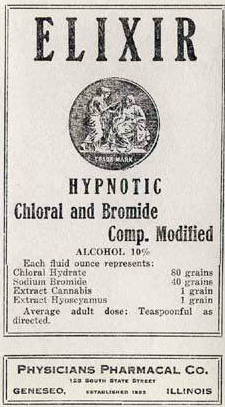 Darla Dare pointed to various posters showing old Cannabis Medicines. 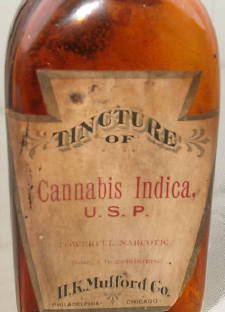 Darla Dare pointed to various posters showing old Cannabis Medicines. 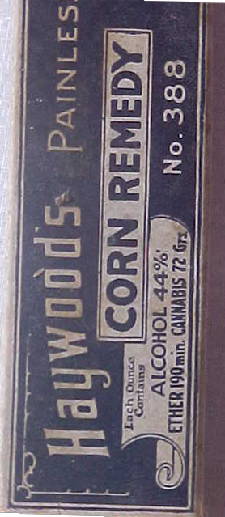 Darla Dare pointed to various posters showing old Cannabis Medicines. 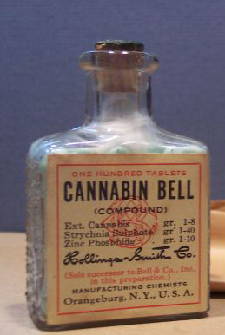 Darla Dare pointed to various posters showing old Cannabis Medicines. 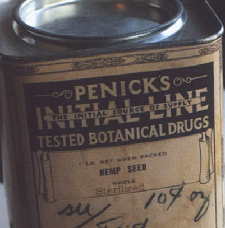 Darla Dare pointed to various posters showing old Cannabis Medicines.  |
Yet another spoke about a conspiracy of the un-washed hippy. That he deliberately got Cancer, just so he would have an excuse to use Medical Cannabis ; But that we were going to stop him. . . . . And on and on the speakers went on, until it was Darla Dare’s turn to speak.
“My name is Darla Dare, I am with a pro-Medical Cannabis museum. Our museum has documented well over 600 pre-1937 (meaning legal) medical cannabis medicines; ALL of which incidentally were sold in drugstores on a brand or trade name bases.”
Darla Dare now pointed to various posters she had brought with her showing pictures of old Antique Cannabis Medicines and went on. “Here are examples of some of these pre-1937 pharmaceutical medicines.”
At this point, there was now an obvious tension in the meeting room, just a few speakers earlier a narcotics police spokeswoman had stated that, Medical Marihuana had NO MEDICAL uses. “That it never had and never would.” Yet here was actual proof, that this just wasn’t the case. The tension was so high that one of the city council members had to interrupt Darla Dare and ask a question. “Young woman, you stated well over 600 such medicines? I find that a little hard to believe.”
“Well actually our museum has probably documented over 2,000 by now, there were just so many that we stopped counting some ten years or so ago at six hundred.” "WHAT," said the council member, obviously taken aback, "How can there have been so many and what do you mean by document?"
Darla Dare politely looked about her, it was obvious that after so many negative speakers that some were doubting her statements. But she politely replied, “By documentation, I mean something that will stand up in court. As example:
“All of which make excellent sources of documentation. For example," and here Darla Dare, reached into a backpack and pulled out an old 'Eli Lilly' Price and Product catalog from the year 1920. “This old catalog documents that in 1920 the Eli Lilly Co., was making and selling around 20 medicines that in one form or another made use of Medical Cannabis.”
What? Said the city council member again, exactly how many ways of smoking this stuff did they have?
Darla Dare replied, “Well they didn't, in fact of all the brand or trade name medicines that we have been able to document so far, only 'one' is smokable. All the rest are either external lotions or oral medications. As you can see by the pictures, before being outlawed, Medical Cannabis came in pill form and you bought it in a drug store. However, many of these medicines were what we now call, 'compound medicines' ; Meaning that there was more then one ingredient in them. Are you able to follow?”
Yes, I guess I can, but please go on -- you were saying.
“I was merely going to point out that this old catalog (year 1920) predates the Reefer Madness dis-information campaign by about a decade or so. That means that there are no stories yet about scanty clad girls (jumping out of windows), no boys (under the influence of Medical Cannabis) grabbing axes and killing whole families, etc. That at this time Medical Cannabis was just another ho-hum but legal medicine and thus no reason not to include it in one's corporate sales catalogs. I believe that another firm, Parke-Davies, holds the record with over 74 Cannabis medicines in just one of their catalogs.” The audience at the city council meeting was now silent; no one had ever brought up these facts before.
"But", interrupted yet another council member, isn’t that figure 2,000 medicines, especially as you stated on a Brand or Trade name bases, a little on the high side?
“Actually NO,” said Darla Dare. “These are the ones that we have been able to fully document, we know for a fact that they existed. But please don’t take my word for it. Our museum has collected over a hundred of these old pharmaceutical price and product catalogs, and religiously computer scanned selected pages. I'm not trying to hock anything here, but we do make this documentation available to the public in CD-rom format at cost.”
But to specifically answer your question, we believe that in total there were probably between 20,000 and 30,000 of these legal pre-1937 medicines. Again, all being sold under a specific brand or trade name.
“What, now wait a minute”, screamed one of the city council women. Already the room was in an uproar, some saying that this had to be a lie, others that it was the drug police had been lying to them for years. But it was obvious that some who had spoken earlier were somewhat uncomfortable with the situation.
“Young woman, this is not very funny,” stated the councilwomen. “I feel you should provide some level of proof to your statements or apologize to everyone in this room.”
“Gladly” said Darla Dare. “I stated earlier that our museum has been able to obtain over a hundred of these old pre-1937 pharmaceutical price and product catalogs. The problem is that between 1850 and 1937 (the years most Antique Cannabis Medicines come from), there were probably over one-thousand [B] pharmaceutical manufacturers in the New York City area alone. And I can assure you that N.Y. was not the only pharmaceutical hub that we had back then. In effect, this means that we have only skimmed the surface of what’s out there to document. And please understand that it’s not for lack of will but lack of finances that prevent us from obtaining yet more.“ [C]
“But be that as it may, we must also take into account that our museum mostly deals with English language North American pharmaceutical antiques. The devil only knows how many German, Swedish, Italian . . . etc., antique Cannabis medicines were out there. But between twenty and thirty thousand world-wide is about right.”
“But young woman” said the city council member. “I’m still having a little trouble believing you. How could Medical Cannabis have been used in so many medicines?”
“Please forgive me,” said Darla Dare, “I’ll speak in terms that you can understand.” “Back in 1840 a Dr. O’Shaughnessy, documented that Cannabis had three major uses, those being:
At a time when even aspirin had not yet been invented and western medicine had few reliable drugs ; anyone of the above uses made Medical Cannabis a wonder drug. But soon doctors found numerous other medical uses, as well as numerous sub-uses for Cannabis."
"Uses, Sub-uses, what's the difference?," asked a councilwomen.
"Oh, I guess that could be confusing," said Darla Dare. "Let me give you a couple of examples. When used as a sedative, Medical Cannabis is great, but if a doctor recommends a stronger dosage, it than acts as a safe sleeping agent. That's an example of a sub-use. On the other hand, a good example of a major medical use occured some forty years after O'Shaughnessy. That was when drug manufacturers discovered that Cannabis could also be used in cough syrups, etc. Our website has a good list of it uses - [www.AntiqueCannabisBook.com].”
Your words certainly contradict what our narcotics police are saying”
“Yes they certainly do” said Darla Dare. “But then the axis of Evil, always seems to have an axe to grind.” To which a bit of laughter broke out in the room.
“I protest,” said one of the narcotics officials who had spoken earlier claiming no medical uses. Many of these drugs she was speaking about are repeats, the same drug simply made by two different manufacturers.
“That is true” said Darla Dare, “Back in the 19th Century, most manufacturers produced what were essentially the same drugs, with extremely small modifications between them. No one is denying that, in fact our museum website even has a whole sub-section dealing with this factor.”
“What section is this?”, asked the narc. “The section on Chlorodyne” answered Darla Dare.
“Now wait a minute”, broke in one of the City Council members. “Isn’t that a bit like cheating? I mean some of these medicines are being counted twice, aren’t they?”
“More than twice, I would think,” said Darla Dare, “At this point, I believe we’ve found about 20 manufacturers that made Chlorodyne alone. Would you like me to expand on the subject?”
“Please do”, said the narc, as did the City Council member.
“Well as I’ve already said, many of the drugs sold before 1937 were generic in nature, meaning that more than one pharmaceutical company was manufacturing it. However, as they were sold under different brand or trade names (as a museum, we do count them multiple times. And additionally, if I may add, it is also possible for one manufacturer to package (essentially the same drug) in pill as well as tablet form, and our museum would also count this twice.
“But” Darla Dare went on, “Allow me to ask all of you a trick question: How many legal makers of pre-1937 Cannabis medicines were there in this country? “
After waiting for a few seconds, she went on, “The answer is probably somewhere between two hundred and three hundred thousand.” At this point there was almost dead silence in the meeting room. "How could this be?" everyone was thinking.
“Maybe an explanation is in order. To most people the very concept behind home-brew medicines, (the art of making batches of one's own medicines at home), must seem a little bit odd at best. And not without good reason, as the practice must have been a haphazard one at best. Yet at one time, home brewed medicines were very common. In fact, from an ideological viewpoint, they were part of the Jeffersonian ideals. Perhaps the following quote best describes this viewpoint:
‘It bestowed upon everyone the alleged ability to heal themselves apart from the pretensions of the allopathic physician. Such a therapeutic system resonated with a Jacksonian democracy attempting to divest itself of what it viewed as elitist European notions that skill and knowledge are reserved only for those of rank and privilege. ---‘John Uri Lloyd’ by Michael Flannery - pp30“For good or for bad, Jeffersonian ideals lead at least in part to the creation of the public school systems and with the ability to read and write, lots and lots of 'How To Do It' books. One didn’t have to go far during this era to locate a book of recipes on medicines for various ailments. I guess one could say, everyone was encouraged to be his or her own doctor.
However, I think you can all see how this situation could led to a little over counting.” Some laughter broke out among the audience. . . “Which is why we only count them if they were sold under a specific Brand or Trade name; Essentially to eliminate this problem. We also have adopted a couple of other restrictions:
- Manufacturing had to have taken place in an area specifically set up for pharmaceutical manufacturing -- not in someone’s back yard.
- The manufacturing firm in question had to have had the proper business licensing for the given era.
“But Ms. (ah) Dare”, said one of the anti-Medical Cannabis City Council Members. “We still have the fact that many of these thousands of pre-1937 (ah) Antique Cannabis Medicines are duplicate counts. Isn’t that cheating?”
Darla Dare replied, “I guess so, if you wish to view it as such --- after all this was an era of generic drugs. However, IF WE WANTED TO CHEAT as you say, we would simply start counting the 500 tablet bottle, as opposed to the 50 or 100 tablet bottles, multiple times. That would make for a really big count real fast."
Laughter once more broke out among the audience, with even some of the City council members joining in.
“Please forgive me” said Darla Dare. “I was only trying to show that, before the passage of the anti-Medical Marihuana laws and contrary to what some of the previous speakers would have you think, Cannabis was in widespread medical use. And as you see by the fact that so many Medical Cannabis dispensaries exist (where legal), it still is to this very day.”
“I think you made your point,” said another member of the city council. It was now obvious, even to the narc’s that their anti-medical Cannabis dispensary law wasn’t going to pass. The public had lost all support for it, . . .
FOOTNOTES:
[A]- Darla Dare herself is a fictional character modeled after Earle Rowell’s (author of Marihuana the weed of madness 1939) own fictional character David Dare. However all incidents actually have happened in real life.
[B]- This figure comes to us via (what we would now term) old phone books, city directories, trade magazines etc.
[C]- If anyone out there has an extra $1,000, this museum curator knows where to go and document yet another 500 more Medical Cannabis Antiques. It's not the lack of will but the lack of $$$ that is holding things back.
WANT TO KNOW MORE:
Due to space / download time considerations, only selected materials are displayed. If you would like to obtain more information, feel free to contact the museum. All our material is available (at cost) on CD-Rom format.
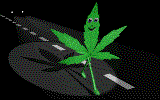 BACK TO CHAPTER 2 |